Get Cleaner Indoor Air Without Opening a Window
One of the most counterintuitive concepts in green building is that of the airtight building envelope, the idea that a home’s external skin (walls, roof, windows etc.) should be completely sealed and the indoor air controlled by mechanical ventilation. For many this seems to contradict the notion of a green building’s incorporating natural ventilation.
Clients often ask us, “Wait, doesn’t my house need to breathe? Won’t it just fill up with mold and stale air if there is no air passing through the windows and walls?” This concern is based on centuries of valid observations that sealed buildings (especially in humid climates) develop mold and condensation. Creating natural ventilation by manually opening the windows has long been a simple way of introducing fresh air into a stale environment.
But today there are several factors to consider that didn’t exist centuries ago.
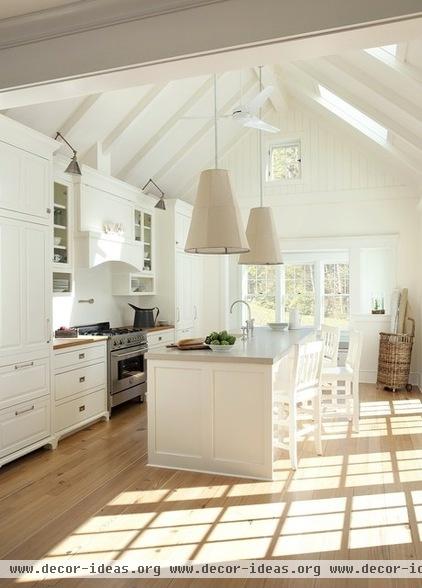
Unfortunately in today’s urban environments (and sometimes even in rural environments), the quality of the “fresh” air outside our homes is not necessarily all that healthy or comfortable to breathe. Pollution, pollen and dust can seriously affect your long-term health and your daily comfort level.
Natural ventilation works well when the temperature difference between indoors and outdoors is big enough to cause an exchange of air. Air movement can be nudged along by some design techniques. However, for many climates, the temperature difference (especially in midseason) is too low to produce any airflow.
Busy work and travel schedules, combined with a misunderstanding of how natural ventilation works, can mean a lot of responsibility for the person opening and closing the windows. There’s a lot of room for human error that can result in unhealthy indoor air or even mold.
As our environments, homes and personal habits evolve, we have to think about the next steps in home design that will help us maintain healthy indoor air year-round. In this ideabook I’ll explain this relatively recent evolution in building science, as well as answer some of the follow-up questions about mechanical versus natural ventilation.
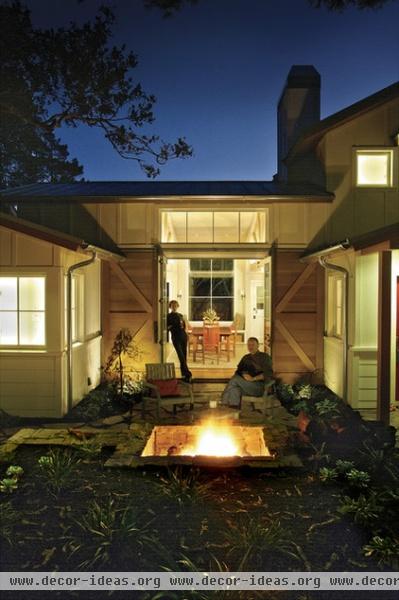
How does a house breathe? Thinking about our buildings as living, breathing organisms is a step in the right direction toward designing healthy, sustainable homes. To design a house with healthy ventilation, we really need to understand the anatomy of this organism.
Many people assume that a home’s envelope, or skin, needs to be able to allow a certain amount of air to pass through for the house to be able to breathe. While this concept was fundamental in early building design, it is now a bit outdated and primitive. As building science and technology have developed, so has our understanding of how to design a healthy home.
Just as we have a respiratory system that is responsible for the intake and exchange of air, so should a house.
What is a house’s respiratory system? A healthy home should have an airtight envelope, or skin, with no air leaks when the windows and doors are closed. There should be a mechanical ventilation system that allows the home to breathe through controlled points. Filters and dehumidifiers can help purify the air filling the home, and a system can even be designed to recover the heat that is expelled with exhaust air (cutting down on heating bills).
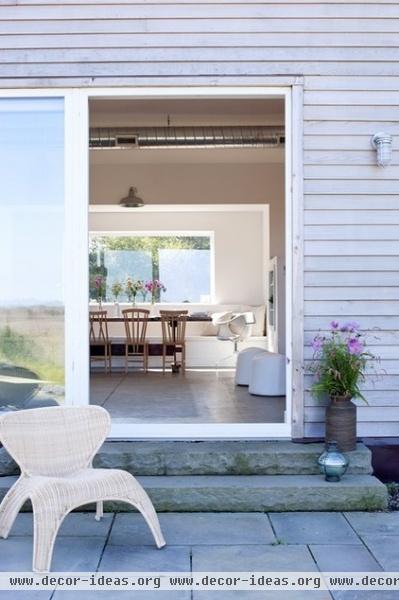
Would I still be able to open my windows with mechanical ventilation? Of course! This is a common question by homeowners concerned that they will be forever enclosed in a hermetically sealed box. You can continue using your windows and doors as you normally would, with the caveat that a better understanding of how opening windows and doors affects your house will result in higher efficiency.

Would I still be able to have a fireplace? Absolutely. You shouldn’t have an open fireplace, but there are a variety of ways to properly detail a stove or fireplace that respect the principles of proper ventilation design. The key is making sure that when the fireplace is not in use, any air intake or exhaust holes are sealed.
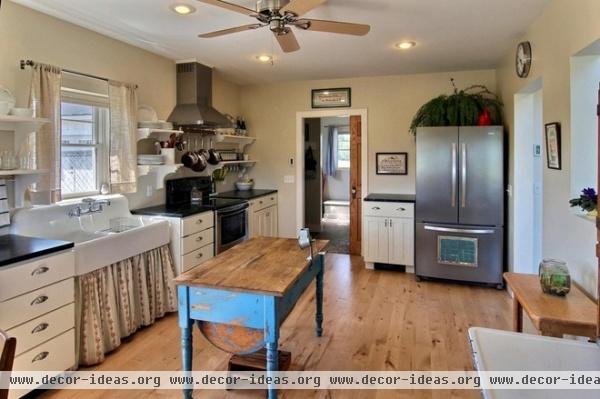
Will I still need to install ceiling fans? That’s up to you. Mechanical ventilation and ceiling fans perform very different tasks. A good mechanical ventilation system will provide you with fresh air, without your feeling or hearing anything. Some people, however, really like the feeling of air moving over their skin or the white noise of a whooshing ceiling fan.
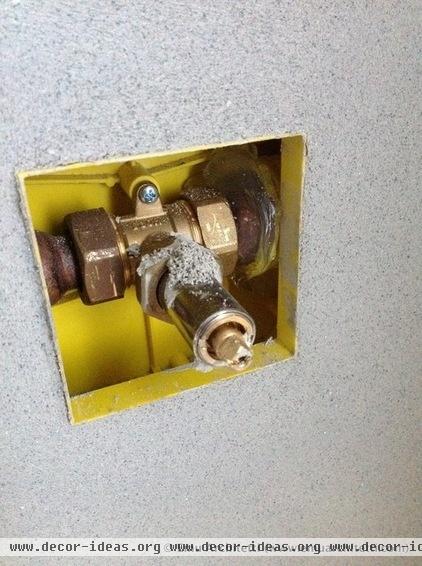
What about utility pipes? Do they need to be insulated? Absolutely. Anything that penetrates the skin of your house, the building envelope, needs to be airtight. For example, shown here is a methane pipe sealed with silicone to prevent air leakages around the edges of the pipe.
Note: Quick fixes, like silicone and extra tape, can be good for small holes and cracks, but should be used in moderation. Studies are still being conducted to determine the durability of these kinds of materials.
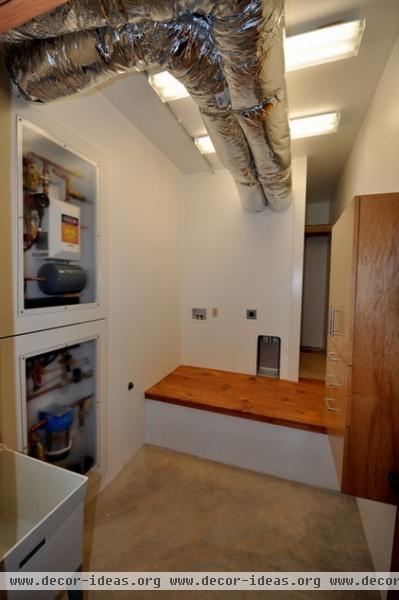
What is a heat recovery unit? It’s an appliance that heats fresh outdoor air with the heat from the exhausted indoor air. This duct shown here belongs to a system that recovers 95 percent of the exhaust heat.
Depending on your climate, you’ll want to make sure to consider units that are equipped with a bypass to suspend this feature during the summer, when you don’t want to recover any heat.
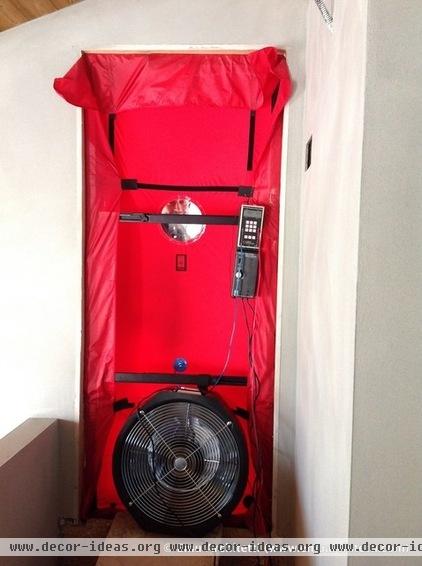
How do I know if my home is airtight? One of the most useful ways to measure the airtightness of a building is the Blower Door Test, which is used as a standard verification tool for many green building certifications (including LEED and Passive House).
Basically, all of the windows and doors are closed, except for one. A blower door like the one shown here is installed at one entrance. The fan at the base pumps air into or out of the home, depending on what kind of test you are running.
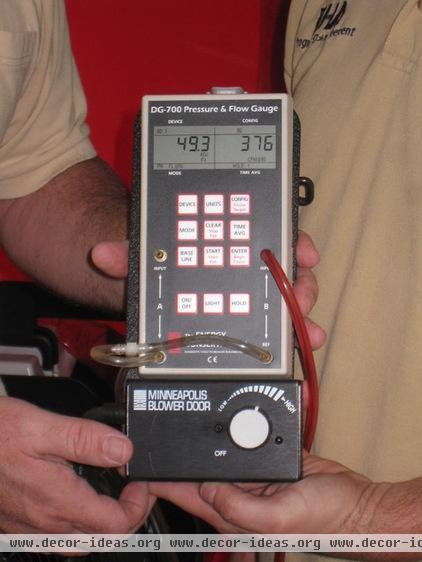
Based on the rate of air leaking through the building envelope relative to the volume of the building, professionals can determine the airflow ratio. This provides a lot of info about how well the home’s skin is performing. Each certification type requires a certain maximum flow rate for the home to be considered healthy.
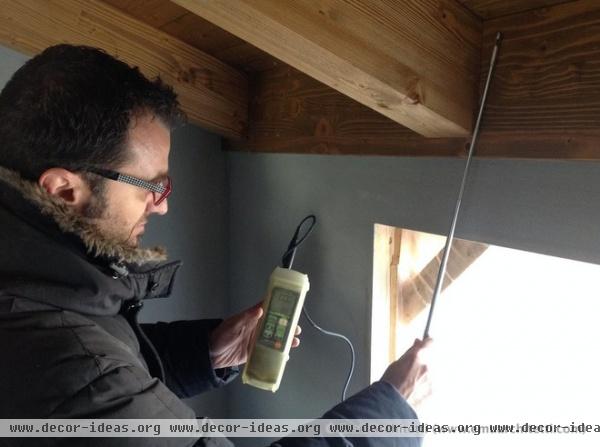
During the Blower Door Test, while the house is under pressure, one way to test specific intersections in the structure for air infiltration is by using an anemometer. Here, for example, a negligible infiltration rate is being read where the rafter meets the collar beam.
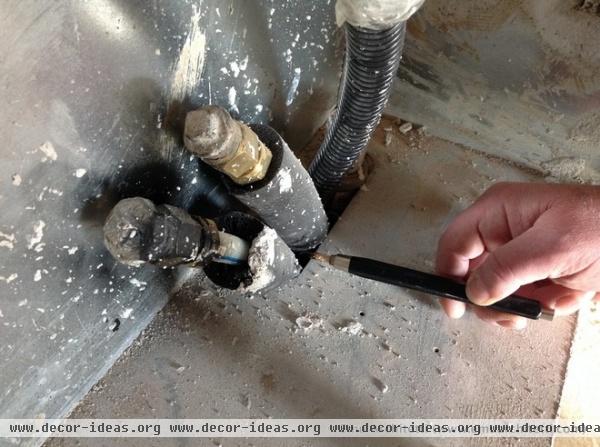
A simpler way of visually identifying problematic points in a similar way is by using a smoke pencil to view air movement. If the smoke dissipates, there is probably no leak. However, if you see the smoke streaming to one point, you may want to investigate.
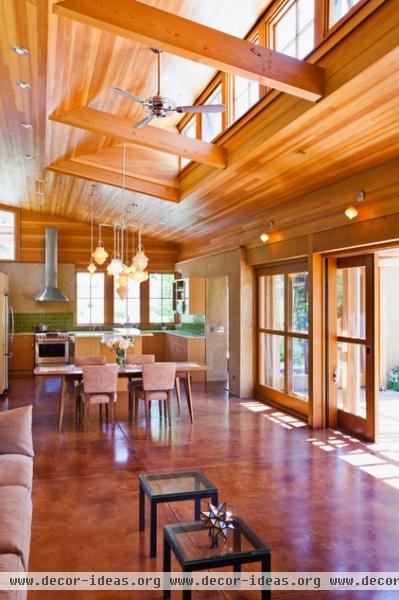
Will I feel the difference with mechanical ventilation? Remember, the way your house breathes affects the way you breathe.
Few people are aware of the symptoms of sick building syndrome, which include a range of ailments from headaches to respiratory problems. Many of these can be tackled by addressing your home’s indoor air quality.
One thing we hear over and over again as professionals is the shock from clients who step into a properly ventilated home for the first time. In urban environments especially, the indoors can become an oasis of clean air as well as a shelter from pollution and dust. Even in rural environments, where some would argue that natural ventilation is sufficient, there can be benefits to filtering out pollen and other allergens.
Do you live in a home with a certified mechanical ventilation system? Share your thoughts below!
Read about green building












